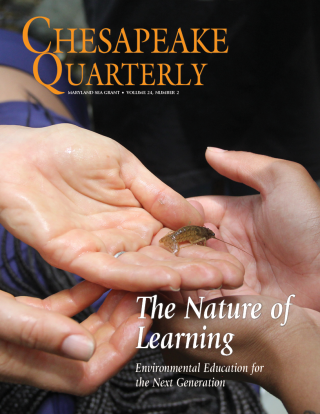Knauss legislative fellowships in Congress help build careers — and they're fun and educational. See our video and fact sheet for details.
The Maryland Sea Grant Bookstore will be closed for the winter holidays from Monday, December 15th to Friday, January 2nd and will not be taking orders during that time.
R/CR-2a
Development of bioeconomic models for blue crabs in the Chesapeake Bay
Principal Investigator:
Thomas J. MillerStart/End Year:
2005 - 2009Institution:
Chesapeake Biological Laboratory, University of Maryland Center for Environmental ScienceCo-Principal Investigator:
David Bunnell, Great Lakes Science Center, U.S. Geological SurveyTopic(s):
- Blue Crabs
Description:
Objectives: We will develop bioeconomic simulation models that will reveal how changes in fishing efforts influence the spawning potential, yield, revenue, and profit of the Chesapeake Bay blue crab fishery. Through a series of steps, these models will reveal sustainable levels of fishing mortality that maximize the economic return for commercial crabbers. We also will develop bioeconomic optimality models that will maximize a commercial crabbers' annual profit by determining the optimal number of pots to fish. Methodology: The bioeconomic simulations will build upon a biological model that we recently validated for blue crabs in the Chesapeake Bay. The simulations will reveal how response surfaces of biological (yield, spawning potential) and economic (revenue, profit) output vary with respect to effort in the hard-and soft shell fisheries. We will identify levels of efforts that are not biologically sustainable. The optimality models will use dynamic programming to determine how many pots should be fished each week to maximize annual profit. They will rely on revenue and cost functions developed for the simulation models. We also will determine how many pots should be allocated to the soft-shell peeler and hard-shell fishery each week, for a given license type. Rationale: Since 1996, blue crab populations have exhibited a downward trajectory that has reduced total landings and monetary value for commercial crabbers. Managers have recently instituted regulations to reduce fishing effort to protect the smaller spawning population, resulting in further economic hardship for the crabbers. Herein, we propose development of models that can reconcile biological and economic viewpoints by determining management strategies that maximize economic return while ensuring sustainable exploitation rates.
Related Publications:
Bunnell, DB; Lipton, DW; Miller, TJ. 2010. The bioeconomic impact of different management regulations on the Chesapeake Bay blue crab fishery. North American Journal of Fisheries Management30(6):1505 -1521. doi:10.1577/M09-182.1. UM-SG-RS-2010-10.
Bunnell, DB; Miller, TJ. 2005. An individual-based modeling approach to spawning-potential per-recruit models: an application to blue crab (Callinectes sapidus) in Chesapeake Bay. Canadian Journal of Fisheries and Aquatic Sciences62(11):2560 -2572. doi:10.1139/F05-153. UM-SG-RS-2005-19.





